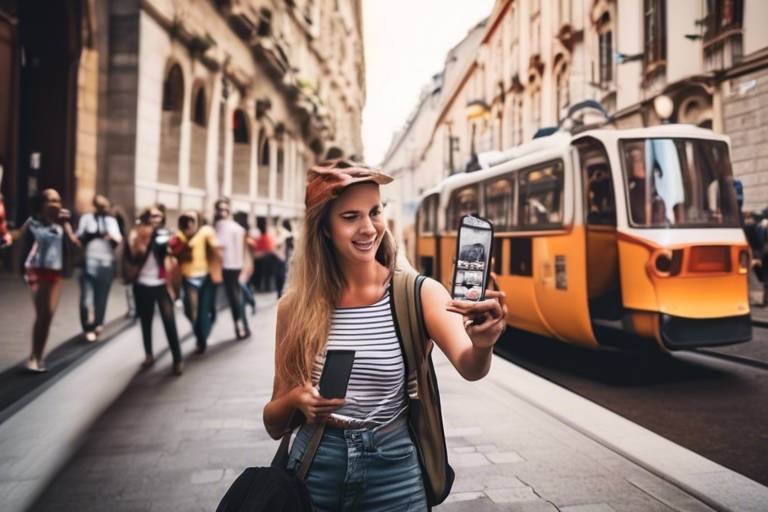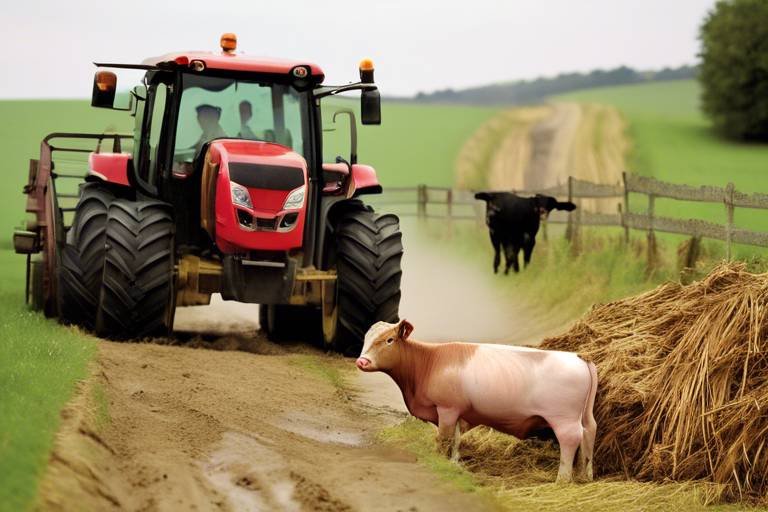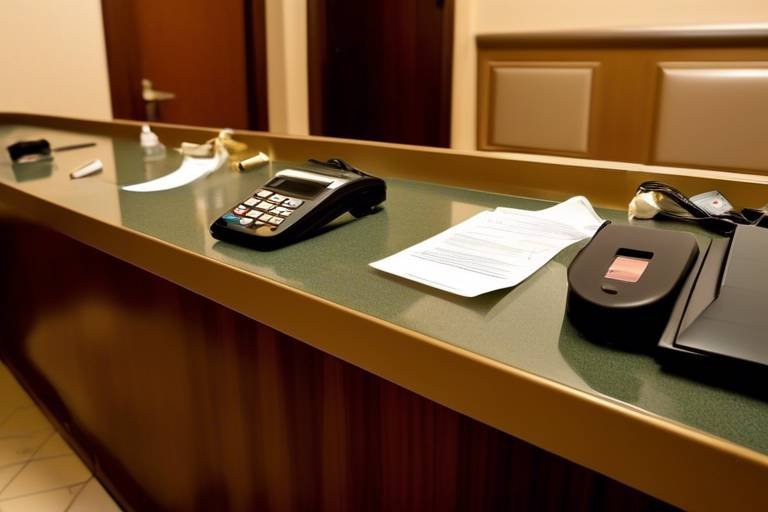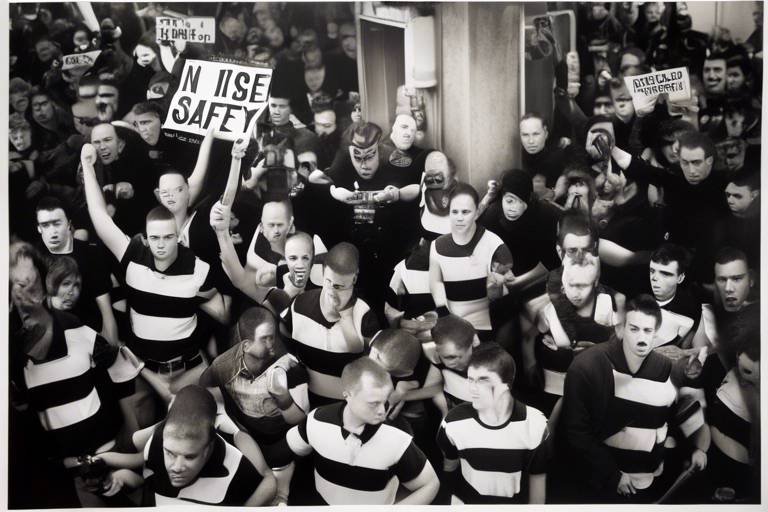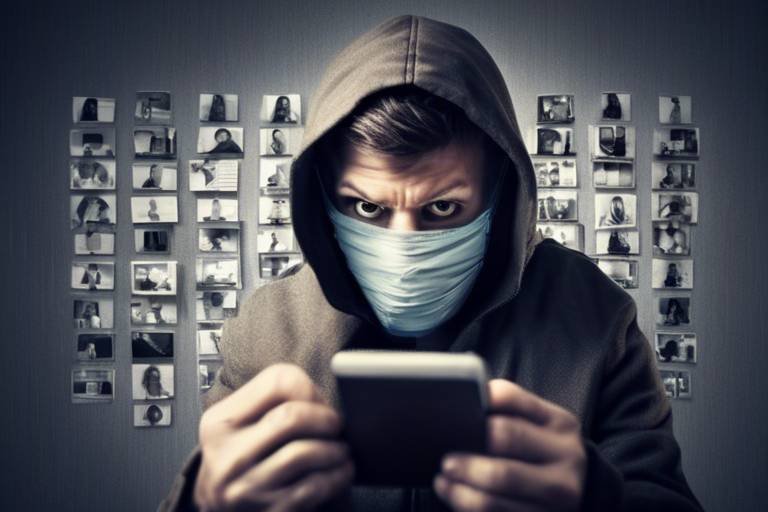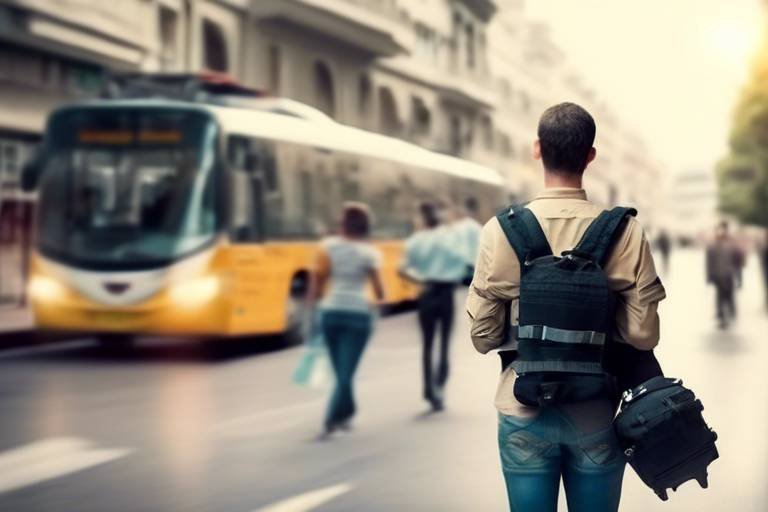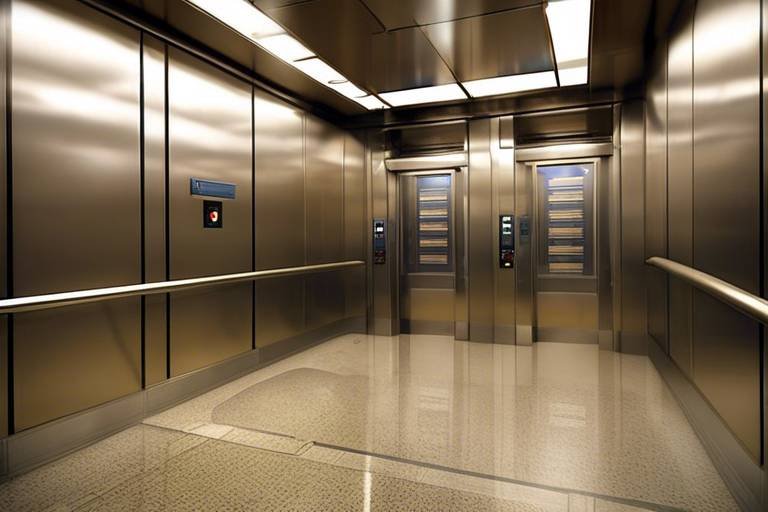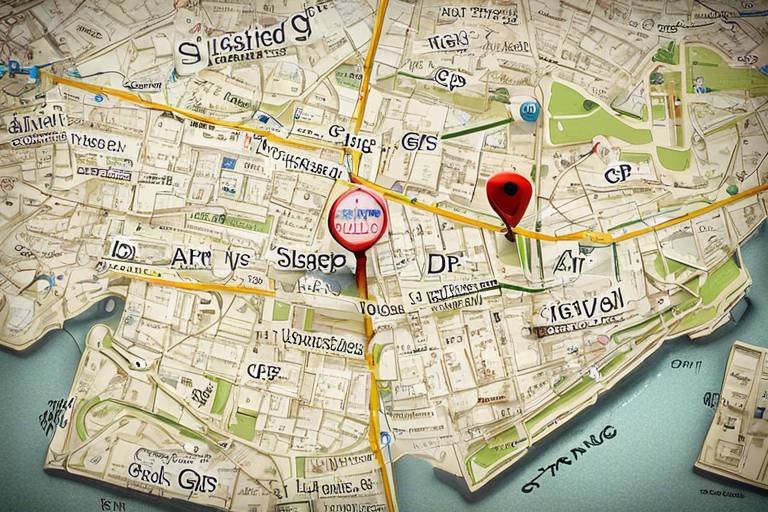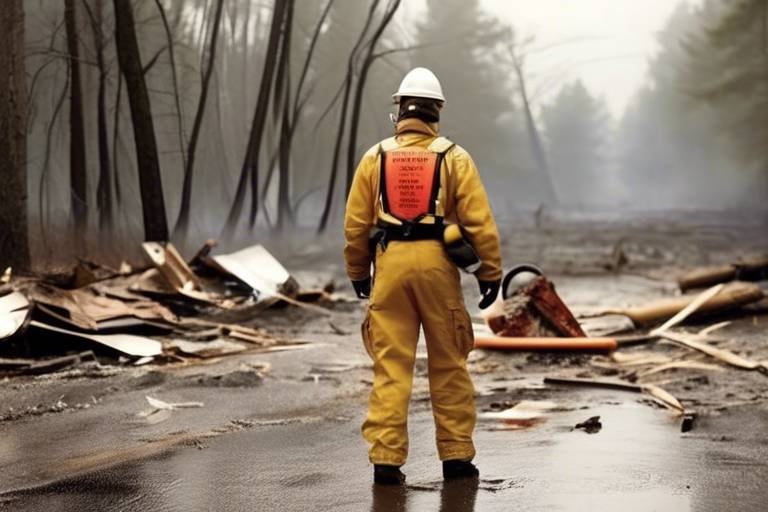Capturing Selfies: Navigating the Risks
In today's digital age, the art of taking selfies has become a ubiquitous part of our social interactions. With the tap of a button, we can capture moments that reflect our personalities, adventures, and emotions. However, while selfies can be fun and a great way to express ourselves, it's essential to recognize that there are inherent risks involved. From physical dangers to psychological impacts and social media pressures, navigating the selfie culture requires a careful approach. This article explores the various risks associated with taking selfies, including safety concerns, psychological impacts, and social media implications, while providing tips for responsible selfie-taking.
Selfie culture can lead to various dangers, from accidents to social pressures. As we scroll through our feeds, it's hard not to notice the plethora of perfectly curated selfies. But behind those smiles and picturesque backgrounds lie risks that many overlook. Understanding these risks is crucial for ensuring safe and mindful selfie practices. Have you ever thought about how the quest for the perfect selfie could lead to unwanted consequences? It's not just about looking good; it’s about being aware of our surroundings and the potential pitfalls that come with our selfie obsession.
Taking selfies in precarious situations can result in serious injuries or fatalities. Every year, numerous incidents are reported where individuals have suffered accidents while trying to capture that ideal shot. Whether it's standing too close to the edge of a cliff or posing on a busy street, the thrill of the moment can cloud our judgment. Let’s take a closer look at some common scenarios where physical risks are prevalent and how to avoid them. Remember, a great selfie isn’t worth risking your life!
Selfies taken at high altitudes, like cliffs or rooftops, often lead to accidents. The allure of breathtaking views can tempt anyone to push boundaries, but safety should always come first. Imagine standing on a cliff, the wind in your hair, and the perfect sunset behind you. It’s easy to get carried away in the moment, but it’s crucial to maintain safety precautions. Always ensure you're on stable ground and avoid leaning over edges. A momentary lapse in judgment can lead to devastating consequences.
Falling while trying to capture the perfect selfie is a real danger that many underestimate. The thrill of the shot can make us oblivious to our surroundings. It’s vital to be aware of where you are standing and what’s behind you. Before snapping that picture, take a moment to survey the area. Are there any loose rocks? Is the ground uneven? By being mindful of your environment, you can significantly reduce the risk of falls and injuries.
Natural environments can pose risks when taking selfies. Whether you're at the beach, in a forest, or near a waterfall, it’s essential to identify and mitigate potential hazards. For instance, slippery rocks near water bodies can lead to serious injuries, while wildlife encounters can be unpredictable. Always prioritize safety by staying alert and informed about your surroundings. Remember, nature is beautiful, but it can also be dangerous!
Selfies can distract individuals from their surroundings, leading to accidents. Have you ever been so focused on getting the right angle that you forgot to look where you were going? This distraction can compromise your safety. It's easy to lose track of what's happening around you when you're focused on your phone. To stay safe, take breaks from your device and remain aware of your environment. Ensure that you’re not putting yourself or others in harm's way while trying to capture that perfect moment.
The act of taking selfies can influence self-esteem and mental health. While capturing moments can be fulfilling, it's essential to consider how this practice affects our psyche. The constant comparison to others can lead to detrimental self-esteem issues. How often do we scroll through social media and feel inadequate? The pressure to present a curated life can distort reality and affect our mental health.
Frequent selfie-taking can lead to comparisons and self-esteem issues. The images we see online often portray an unrealistic standard of beauty and success. This can create a cycle of negative self-perception, where individuals may start to feel that they don’t measure up. It’s crucial to remember that everyone has their struggles, and what we see online is often just a highlight reel. Embracing our uniqueness is far more rewarding than chasing an unattainable ideal.
The pressure to post perfect selfies can be overwhelming. The desire for likes and validation can drive individuals to present an idealized version of themselves. This phenomenon can lead to anxiety and stress. Instead of focusing on authenticity, many get caught up in the pursuit of perfection. It’s essential to prioritize genuine self-representation over the need for approval from others. Remember, it’s okay to be real and imperfect!
To navigate the risks of selfies, adopting responsible practices is essential. It’s not just about capturing a moment; it’s about doing so safely and mindfully. Here are some practical tips for safe and mindful selfie-taking that can help you enjoy the experience without compromising your safety.
Selecting safe environments for selfies is crucial. Before snapping that picture, assess the surroundings. Look for stable ground, avoid crowded areas where you might bump into someone, and steer clear of dangerous locations. By being selective about where you take selfies, you can minimize risks while still allowing for great photo opportunities. Remember, safety should always be your top priority!
Practicing mindfulness while taking selfies can enhance safety. Being present in the moment allows you to appreciate your surroundings and recognize potential hazards. Take a deep breath, soak in the scenery, and then capture your moment. This approach not only ensures your safety but also enriches your overall experience. So, next time you reach for your phone, take a moment to enjoy where you are before hitting that shutter button!
- What are the main physical risks associated with taking selfies?
The main physical risks include accidents at heights, falling risks, and environmental hazards. Always be aware of your surroundings to avoid these dangers.
- How can selfies affect mental health?
Selfies can lead to self-esteem issues and social media pressure, as individuals may compare themselves to unrealistic standards portrayed online.
- What practices can help ensure safe selfie-taking?
Choosing safe locations, being mindful of your surroundings, and limiting distractions can significantly enhance your safety while taking selfies.
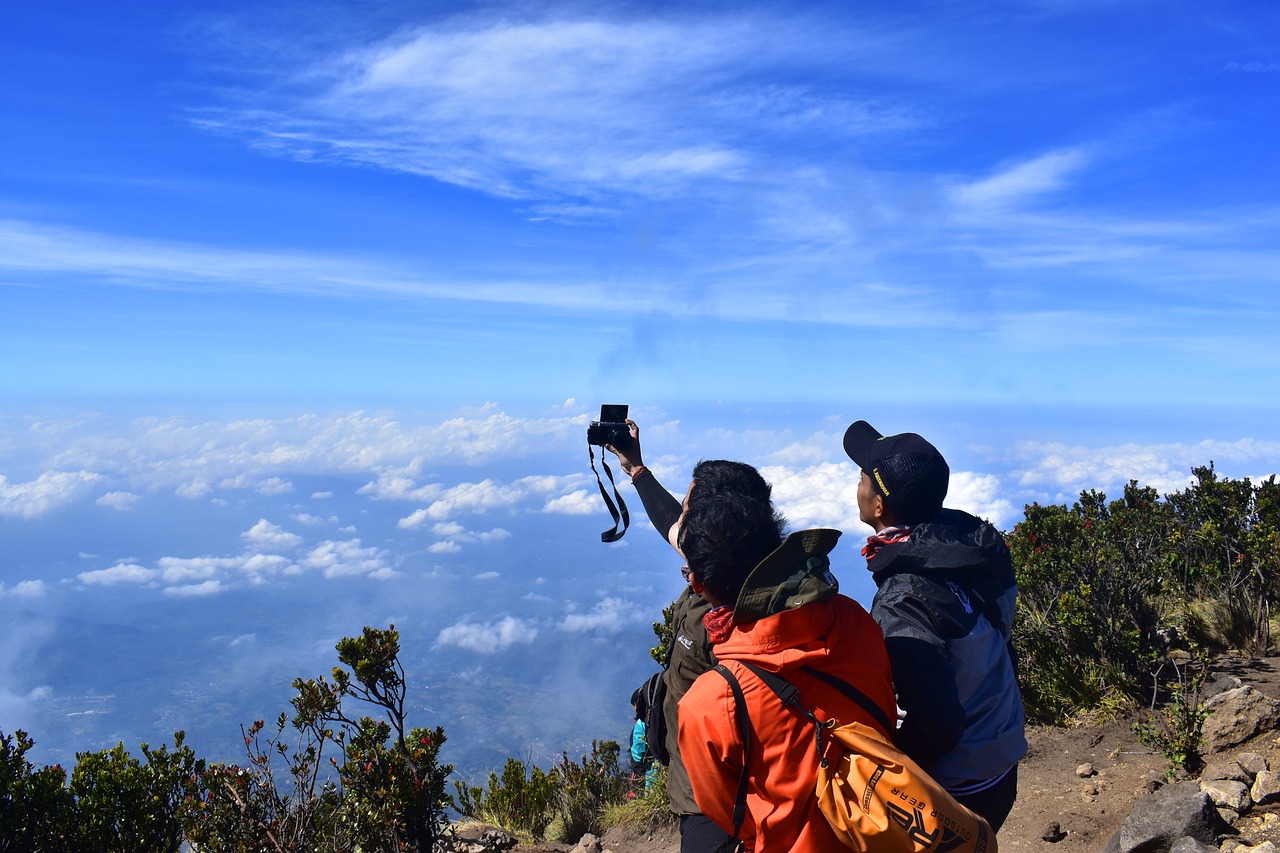
The Dangers of Selfie Culture
In today’s world, where everyone seems to be glued to their smartphones, the phenomenon of selfie culture has taken the digital landscape by storm. While snapping a quick selfie can be a fun way to capture memories, it also comes with a host of dangers that we often overlook. From accidents to social pressures, understanding these risks is crucial for ensuring safe and mindful selfie practices in our fast-paced, image-driven society.
One of the most alarming aspects of selfie culture is the physical risks involved. People often find themselves in dangerous situations just to get that perfect shot. Whether it’s balancing on the edge of a cliff or posing on top of a moving vehicle, the lengths some individuals will go to for a captivating image can lead to serious injuries or even fatalities. It's not just about looking good; it’s about being aware of your surroundings and the potential hazards that come with them.
Moreover, there’s a significant psychological impact that selfies can have on individuals. The constant pressure to present a flawless version of oneself can lead to detrimental effects on mental health. Many people fall into the trap of comparing themselves to the idealized images they see on social media, which can distort their body image and self-worth. This phenomenon can create a cycle of anxiety and dissatisfaction, making it essential to approach selfie-taking with a mindful attitude.
Additionally, the social pressures associated with posting selfies can be overwhelming. With platforms like Instagram and Snapchat encouraging users to share their best moments, there’s a fear of missing out (FOMO) that can lead to risky behavior. People may feel compelled to take selfies in unsafe environments, thinking that the likes and comments will validate their decisions. This creates a dangerous loop where the desire for social acceptance outweighs personal safety.
In summary, while selfies are a fun way to document our lives, it’s vital to recognize the dangers that come along with this trend. Being aware of the physical and psychological risks can help individuals make better choices when it comes to capturing their moments. Remember, it's not just about the picture; it's about your safety and well-being.

Physical Risks Involved
Taking selfies might seem like a harmless activity, but it can expose individuals to significant physical risks, especially in precarious situations. Picture this: you’re standing at the edge of a cliff, the wind is blowing through your hair, and you think, “This would make an epic selfie!” However, that one moment of excitement can quickly turn into a life-altering accident. Understanding these physical risks is crucial for enjoying the selfie experience without putting yourself in harm's way.
One of the most common scenarios where physical risks are prevalent is when individuals attempt to capture selfies at heights. Whether it’s on a rooftop, a mountain peak, or even a tall staircase, the allure of a stunning background can cloud judgment. The adrenaline rush from the breathtaking view can make you forget about safety. Accidents at heights can lead to severe injuries or even fatalities, which is why safety precautions are paramount. Always consider the stability of the ground beneath you and the distance from the edge before snapping that perfect shot.
When it comes to taking selfies at high altitudes, falling risks are a significant concern. Think about it: you’re balancing on a ledge, trying to get the angle just right, and suddenly your foot slips. The consequences could be dire. To prevent such incidents, it’s essential to be aware of your surroundings. Here are a few tips to keep in mind:
- Stay Away from Edges: Always maintain a safe distance from cliffs, rooftops, or any high places.
- Use Stable Surfaces: Ensure that the ground you’re standing on is stable and secure.
- Take a Friend: Having someone with you can help keep an eye on your safety while you focus on getting that perfect picture.
Falling while trying to capture the perfect selfie is a very real danger. Many people underestimate how slippery surfaces can be or how unstable a ledge might feel. This is why being aware of your surroundings is crucial. Before you even think about lifting your phone for a selfie, take a moment to assess your environment. Are there loose rocks? Is the ground uneven? Awareness can make all the difference in preventing accidents.
Natural environments can also pose risks when taking selfies. Imagine you’re on a beautiful hiking trail, surrounded by stunning vistas, and you decide to take a selfie with a waterfall in the background. Suddenly, you slip on wet rocks or lose your footing on muddy terrain. To mitigate these hazards, it’s vital to identify potential risks in outdoor settings. Look for warning signs, avoid taking selfies in unstable areas, and always prioritize your safety over the perfect shot. Remember, no photo is worth risking your well-being!
In conclusion, while selfies can be a fun way to capture moments and share experiences, it’s essential to be mindful of the physical risks involved. By understanding the dangers associated with taking selfies, especially in precarious situations, you can enjoy this popular activity while ensuring your safety. So, the next time you’re tempted to take a selfie at a height or in a risky environment, remember to think twice before clicking that shutter!
Q: What are the most common risks associated with taking selfies?
A: The most common risks include falling from heights, distractions leading to accidents, and environmental hazards like slippery surfaces or unstable ground.
Q: How can I ensure my safety while taking selfies?
A: Always assess your surroundings, avoid risky locations, and consider having a friend with you to help monitor safety while you take your photo.
Q: Are there psychological impacts of selfie culture?
A: Yes, frequent selfie-taking can lead to self-esteem issues and increased pressure to present a perfect image on social media.
Q: What should I do if I feel pressured to post selfies?
A: Focus on authenticity and remember that it’s okay to take a break from social media. Your self-worth is not defined by likes or comments.
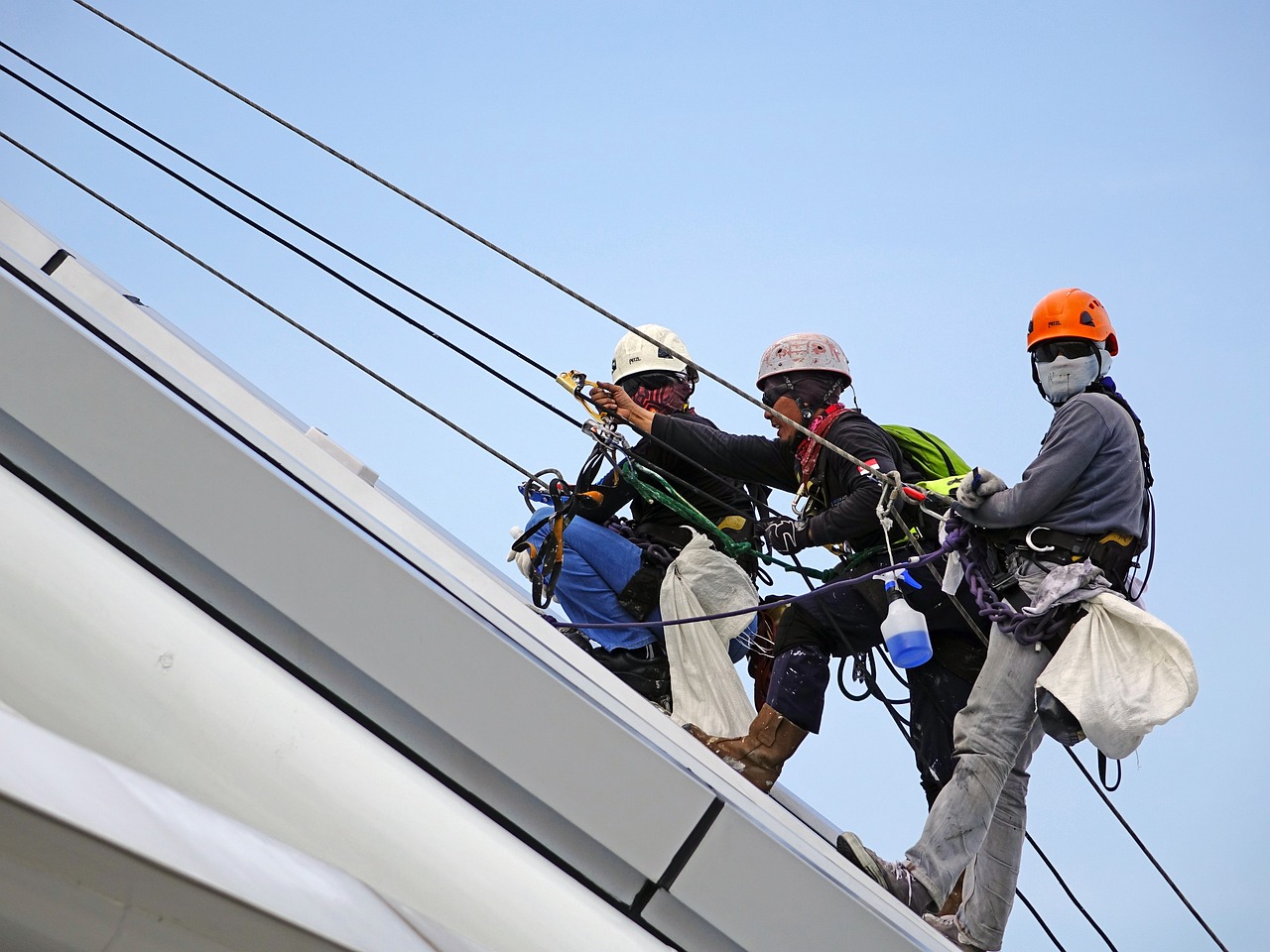
Accidents at Heights
When it comes to capturing that perfect selfie, many of us are drawn to breathtaking heights—think stunning cliff tops, skyscraper rooftops, or even the edge of a scenic overlook. However, these picturesque backdrops come with a hidden cost: an increased risk of accidents. The allure of a stunning view can often cloud our judgment, making us forget the potential dangers lurking beneath our feet. It's crucial to remember that while the selfie may last forever, the moment of carelessness can lead to serious consequences.
Imagine standing on a cliff, the wind tousling your hair, and the sunset painting the sky in vibrant hues. You pull out your phone, excited to capture this moment. But wait! Have you considered the risks involved? Many accidents at heights occur because individuals underestimate their surroundings. A sudden gust of wind, a loose rock, or even a misstep can lead to disastrous outcomes. The thrill of the moment can easily turn into a nightmare if safety precautions aren't taken seriously.
To help you navigate these risky situations, here are some essential safety tips to keep in mind:
- Always assess your surroundings: Before taking a selfie, take a moment to look around. Are there any loose rocks? Is the ground stable? Are there any warning signs indicating danger?
- Use a selfie stick: When possible, use a selfie stick to keep a safe distance from the edge. This not only helps you avoid dangerous situations but also allows for a wider shot.
- Never lean over edges: It might be tempting to lean over to get that perfect angle, but this is one of the most common causes of falls. Stay a safe distance back from any ledges.
- Take a buddy: If you're exploring high places, bring a friend along. Not only does this make for a more enjoyable experience, but having someone with you can also provide an extra layer of safety.
It's also important to understand that accidents can happen in the blink of an eye. According to a study published in the journal Injury Prevention, there has been a notable increase in selfie-related injuries, particularly among young adults and teenagers. The study highlighted that many of these incidents occurred while individuals were trying to take selfies in precarious spots. This alarming trend serves as a reminder that safety should always come first, regardless of how picturesque the setting may be.
In conclusion, while the desire to capture stunning selfies at heights is completely understandable, it’s vital to prioritize safety over aesthetics. Remember, no photo is worth risking your life. By taking a few simple precautions and being mindful of your surroundings, you can enjoy the thrill of selfie-taking without compromising your safety. So the next time you're drawn to a breathtaking viewpoint, keep these tips in mind and snap that selfie—safely!
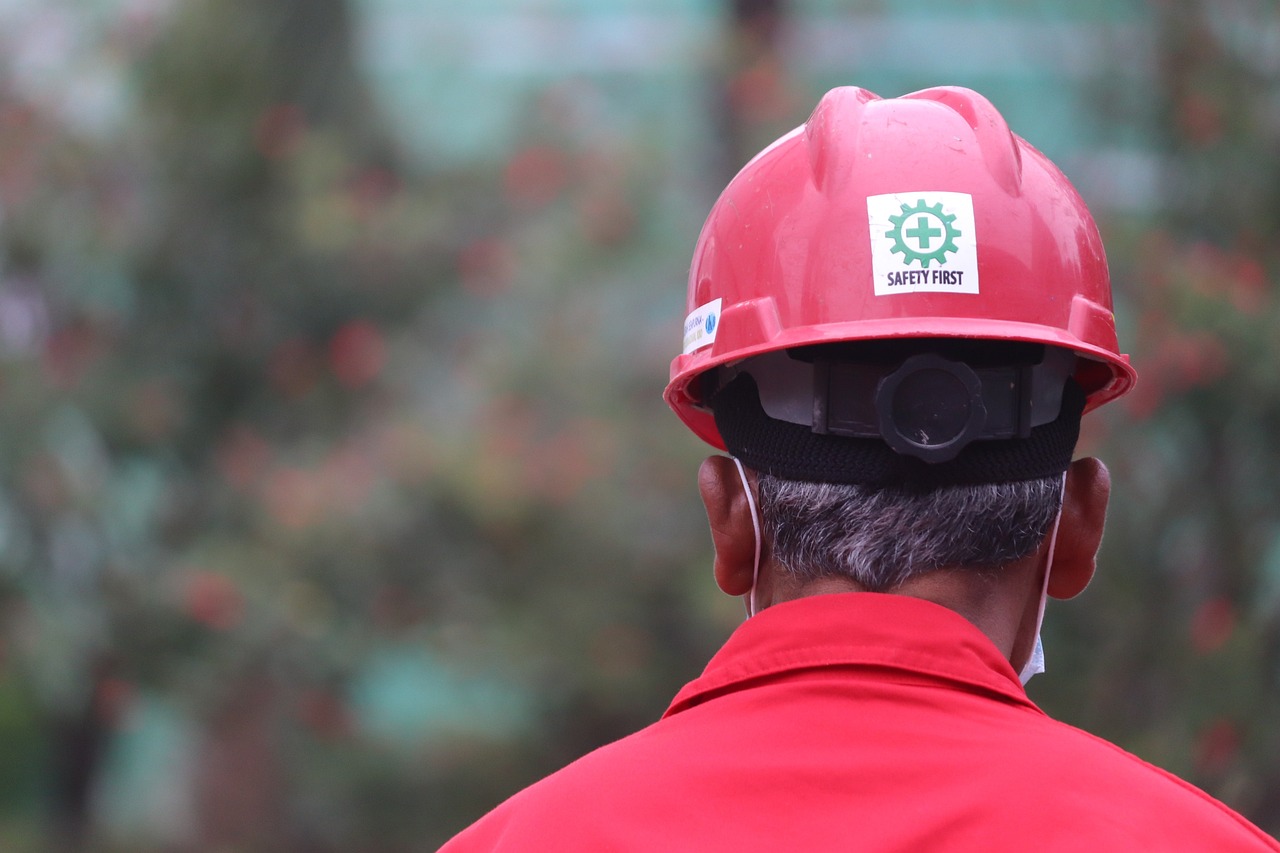
Falling Risks
Taking selfies in high-risk environments can lead to serious accidents, and one of the most significant dangers is the risk of falling. Imagine standing on the edge of a breathtaking cliff, the wind in your hair, and the perfect backdrop for an Instagram post. It’s exhilarating, right? But that thrill can quickly turn into a nightmare if you're not careful. Many people underestimate the **importance of their surroundings** when caught up in the moment of capturing that perfect shot.
Falling risks are particularly prevalent in locations such as:
- Cliffs and high ledges
- Rooftops
- Stairs or escalators
- Busy streets or crowded venues
In these situations, it’s easy to get distracted by the camera and lose focus on your footing. A simple misstep can lead to catastrophic consequences. According to reports, there have been numerous incidents where individuals have fallen while attempting to take selfies, resulting in severe injuries or even fatalities. This reality underscores the necessity for vigilance and caution.
When you're in a precarious position, consider these essential safety tips:
- Stay aware of your surroundings: Before you even think about snapping a selfie, take a moment to assess your environment. Are there any loose rocks, uneven surfaces, or other hazards nearby?
- Use a friend as a spotter: If you're in a particularly risky spot, have a friend help you out. They can keep an eye on your safety while you focus on getting the shot.
- Limit distractions: Put your phone down for a moment and enjoy the view. Sometimes, the best memories are made without a camera in hand.
In conclusion, while the allure of capturing stunning selfies can be tempting, it’s crucial to prioritize safety. The thrill of a great photo isn’t worth the risk of a fall. So next time you're about to take a selfie in a risky location, pause and think: is it really worth it? Remember, your safety should always come first.
Q: What should I do if I want to take a selfie in a dangerous location?
A: Always prioritize safety first. Look for stable ground, use safety gear if necessary, and consider having someone with you to help keep an eye on your surroundings.
Q: How can I avoid distractions while taking selfies?
A: Before taking a selfie, take a moment to observe your environment. Put your phone down and enjoy the moment. When you're ready, ensure you have a clear view of your surroundings.
Q: Are there safer alternatives to taking selfies in risky locations?
A: Yes! Consider using a tripod or a selfie stick to maintain distance from the edge of a cliff or any hazardous area. This way, you can capture stunning photos without compromising your safety.

Environmental Hazards
When it comes to capturing that perfect selfie, many of us often find ourselves in stunning natural environments—think breathtaking mountain views, serene beaches, or lush forests. However, while these settings can provide the ideal backdrop for our photos, they also come with a set of that can pose serious risks to our safety. It's easy to get caught up in the moment and forget about the potential dangers lurking around us.
For instance, taking selfies near water bodies can be particularly treacherous. Slippery rocks, sudden waves, or even strong currents can catch you off guard, leading to slips and falls. Imagine trying to snap a photo while balancing on a rocky ledge—one misstep could result in a tumble into the water below. It's crucial to maintain a healthy respect for nature and its unpredictability. Always assess your surroundings before you start posing for the camera.
Moreover, wildlife encounters can also be a significant hazard. Many individuals have attempted to take selfies with wild animals, thinking it would make for a cool Instagram post. However, this can be incredibly dangerous. Animals, especially when they feel threatened or cornered, can react unpredictably. Instead of risking your safety for a photo, consider keeping a safe distance and using a zoom lens to capture the moment without putting yourself in harm's way.
Another environmental risk comes from unstable terrain. Hiking trails, cliffs, or sandy dunes can shift unexpectedly, leading to falls or injuries. When you're out in nature, it’s essential to remain vigilant and aware of the ground beneath your feet. Always choose stable surfaces for your selfies, and if you're unsure about the safety of a location, it's better to err on the side of caution.
To help you navigate these environmental hazards, here are some tips to consider:
- Research Locations: Before heading out, do a little research on the area. Check for any warnings about dangerous spots or wildlife.
- Stay Aware: Keep your eyes peeled for changing weather conditions, unstable ground, or approaching wildlife.
- Bring a Buddy: Whenever possible, take selfies with a friend. Not only is it more fun, but they can also help keep an eye on your surroundings.
By being mindful of these environmental hazards, you can enjoy capturing beautiful selfies while minimizing the risks. Remember, the goal is to create lasting memories, not to put yourself in danger for a fleeting moment of social media fame.
Q1: What should I do if I encounter wildlife while taking a selfie?
A1: Always maintain a safe distance from wildlife. Use a zoom lens if you want to capture a close-up without putting yourself at risk.
Q2: How can I ensure my safety while taking selfies in natural environments?
A2: Be aware of your surroundings, choose stable locations, and avoid risky poses near cliffs or water. Always prioritize safety over the perfect shot.
Q3: Are there specific locations I should avoid when taking selfies?
A3: Yes, avoid areas known for unstable terrain, strong currents, or dangerous wildlife. Always do your research before venturing out.

Distraction-Related Incidents
In our fast-paced world, the allure of capturing the perfect selfie can often lead to dangerous distractions. When individuals become engrossed in framing their shots, they can easily lose sight of their surroundings, which can lead to unfortunate accidents. Imagine walking along a busy street, phone in hand, attempting to snap a selfie while completely oblivious to the oncoming traffic. This scenario is more common than you might think, and it highlights the critical need for awareness when engaging in selfie-taking.
Moreover, the act of focusing on getting that ideal angle can divert attention from potential hazards. For instance, a person standing on the edge of a cliff might be so consumed with capturing the breathtaking view behind them that they fail to notice the loose gravel beneath their feet. The result? A slip, a fall, and possibly serious injury. This kind of distraction-related incident is not just a mere inconvenience; it can have life-altering consequences.
To illustrate the dangers, let’s take a look at some common distractions that can lead to incidents while taking selfies:
- Surrounding Traffic: Not paying attention to vehicles can result in accidents.
- Environmental Hazards: Things like uneven terrain, water bodies, or wild animals can pose serious risks.
- Group Dynamics: When taking group selfies, individuals may become distracted by each other, leading to chaotic situations.
It's essential to remember that while capturing memories is important, your safety should always come first. Here are a few tips to help mitigate the risks associated with distraction while taking selfies:
- Stay Alert: Before snapping a selfie, take a moment to assess your surroundings. Look for potential hazards and ensure you are in a safe location.
- Limit Your Time: Try to keep selfie sessions brief. The longer you focus on your phone, the more likely you are to become distracted.
- Buddy System: If you're with friends, have someone keep an eye out for any dangers while you take your photo.
By integrating these practices into your selfie-taking routine, you can enjoy capturing those perfect moments without compromising your safety. Remember, a great selfie isn’t just about the angle or lighting; it’s also about being present and aware of your environment. So, the next time you feel the urge to pose for a selfie, take a deep breath, look around, and then smile for the camera!
Q: What should I do if I feel unsafe while taking a selfie?
A: If you feel unsafe, it’s best to stop immediately. Assess your surroundings and find a more secure location before attempting to take a selfie.
Q: How can I improve my awareness while taking selfies?
A: Practice mindfulness by taking a moment to observe your environment before focusing on your camera. This will help you stay aware of potential hazards.
Q: Are there specific locations I should avoid when taking selfies?
A: Yes, avoid high-risk areas like cliffs, busy roads, or places with unstable ground. Always prioritize your safety over getting the perfect shot.
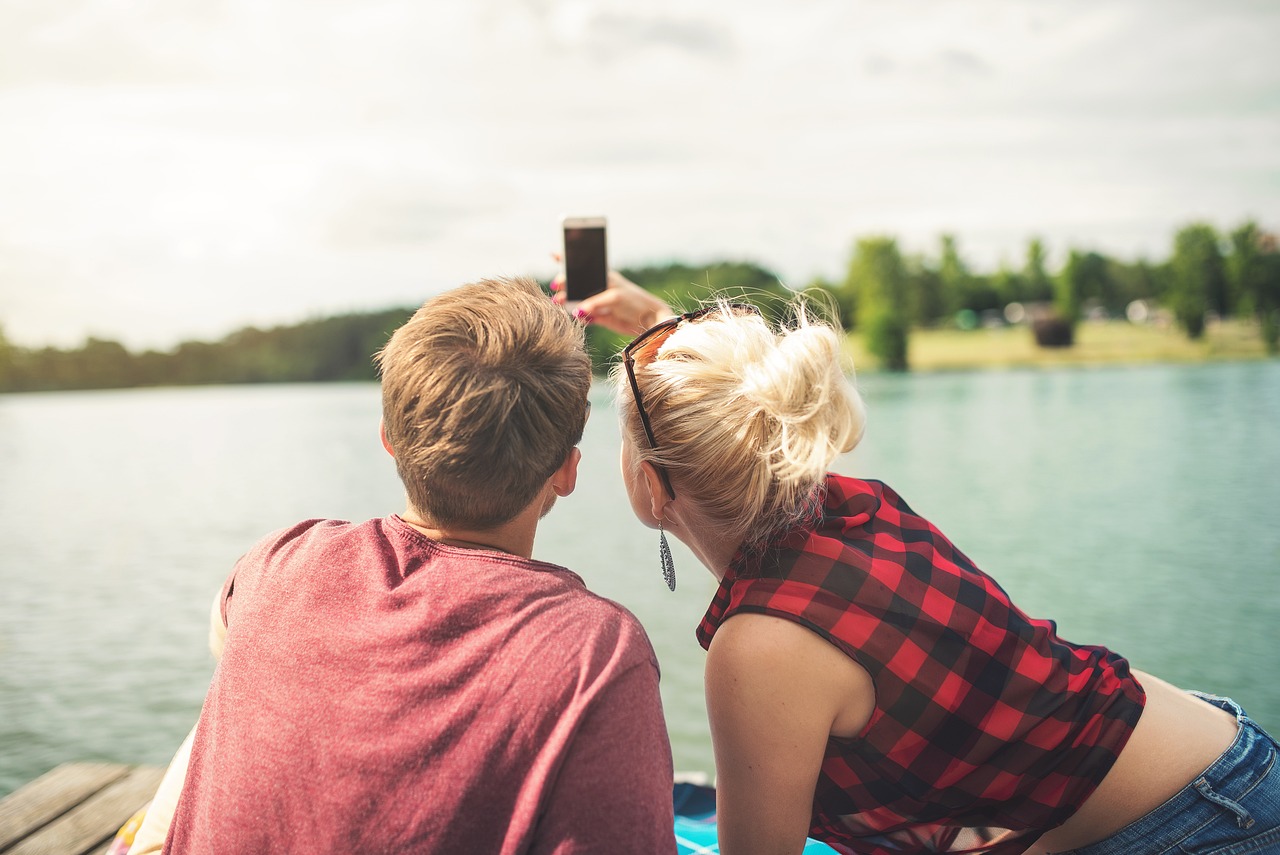
Psychological Impacts of Selfies
The act of taking selfies is not just about capturing a moment; it can significantly influence our self-esteem and mental health. In a world where social media reigns supreme, the pressure to present a perfect image can create a distorted sense of self-worth. Have you ever posted a selfie and anxiously awaited likes and comments? This behavior is more common than you might think, and it can lead to a rollercoaster of emotions.
One of the most profound effects of selfie culture is the rise of self-esteem issues. When individuals constantly compare their selfies to those of others, it can lead to feelings of inadequacy. The curated lives we see on platforms like Instagram often showcase only the highlights, leaving many feeling like they don’t measure up. According to a recent study, over 60% of young adults reported feeling pressure to look perfect online, which can lead to anxiety and depression.
Moreover, the quest for the ideal selfie can create a vicious cycle. The more we seek validation through likes and comments, the more we may feel compelled to edit our photos to fit societal standards. This can result in a distorted body image, where individuals begin to see themselves as less attractive or worthy than they really are. It’s essential to recognize that these feelings are not just personal struggles but are often exacerbated by the unrealistic standards set by social media.
Additionally, the pressure to post perfect selfies can lead to a phenomenon known as social media pressure. This pressure can manifest in various ways, including:
- Feeling the need to constantly update your social media profile with new selfies.
- Experiencing anxiety if a post does not receive enough engagement.
- Engaging in unhealthy behaviors, such as excessive editing or even cosmetic procedures, to achieve a desired look.
It’s crucial to remember that social media is often a highlight reel rather than a true reflection of reality. Many influencers and celebrities use filters and editing tools to enhance their images, which can create unrealistic expectations for their followers. Instead of striving for perfection, we should embrace authenticity. Authenticity not only fosters genuine connections but also promotes self-acceptance.
To combat the psychological impacts of selfies, individuals can adopt a few mindful practices. For instance, taking breaks from social media can help reduce the pressure to post. Engaging in activities that boost self-esteem, such as exercising or pursuing hobbies, can also shift the focus away from appearance. Ultimately, it’s about finding a balance and recognizing that our worth is not defined by the number of likes or comments we receive.
- Q: Can taking selfies really affect my mental health?
A: Yes, frequent selfie-taking can lead to comparison and self-esteem issues, especially when influenced by social media. - Q: How can I ensure my selfie-taking is healthy?
A: Practice mindfulness, take breaks from social media, and focus on authenticity rather than perfection. - Q: What should I do if I feel pressured to post selfies?
A: Remember that it’s okay to take a break from posting and prioritize your mental well-being over social media engagement.
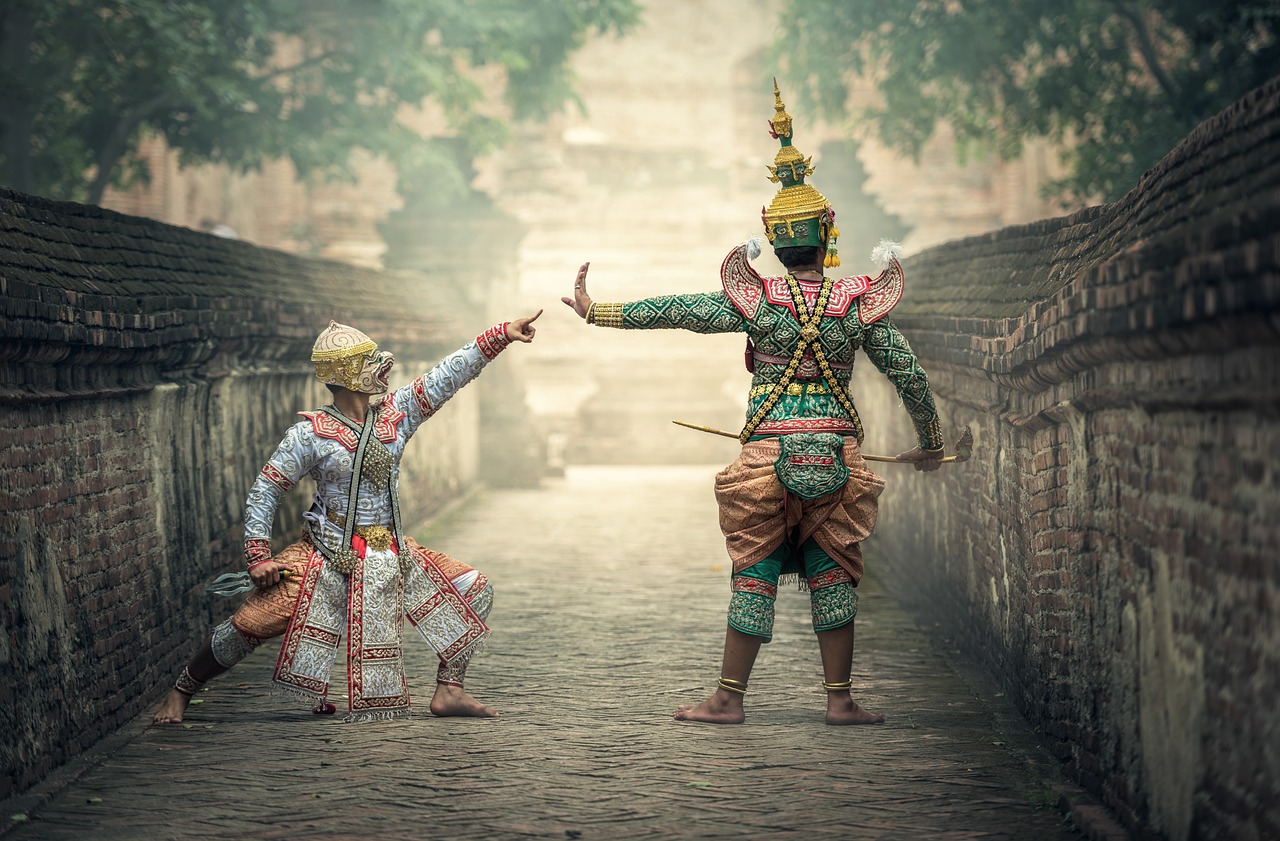
Self-Esteem Issues
In today's world, where every moment is a potential photo opportunity, the act of taking selfies has become a double-edged sword. On one hand, it allows individuals to express themselves and capture memories; on the other hand, it can lead to significant . The frequent comparison of oneself to the seemingly perfect images of others on social media can distort our perceptions of beauty and worth.
When scrolling through platforms like Instagram or Snapchat, it’s easy to feel inadequate when we see friends or influencers showcasing their best selves. These images are often meticulously curated, filtered, and edited, creating an unrealistic standard that many aspire to. As a result, individuals may find themselves caught in a cycle of self-doubt and anxiety, questioning their own appearance and value. This cycle can be detrimental to mental health, leading to conditions such as depression and anxiety disorders.
Moreover, the quest for the perfect selfie can lead to a kind of addiction. People may feel compelled to take countless photos, obsessively seeking validation through likes and comments. This reliance on external approval can erode self-worth and create a fragile sense of identity. When the likes don't come pouring in, it can feel like a personal failure, further exacerbating feelings of inadequacy.
It's essential to recognize that social media often presents a distorted reality. Many users only share their highlights, leaving out the mundane or challenging aspects of life. Understanding this can help mitigate the negative impacts of self-comparison. Instead of viewing others' posts as benchmarks, we should strive to appreciate our unique qualities and experiences.
To combat these self-esteem issues, consider adopting a few mindful practices:
- Limit Social Media Exposure: Reducing the time spent on social media can help lessen feelings of inadequacy.
- Curate Your Feed: Follow accounts that promote positivity and self-acceptance rather than those that trigger comparison.
- Focus on Authenticity: Share unfiltered moments with friends and family to foster genuine connections.
Ultimately, it's vital to remind ourselves that we are more than the images we project online. Embracing our imperfections and celebrating our individuality can pave the way for healthier self-esteem and a more fulfilling life. Let's strive to create a culture where self-love and authenticity take precedence over superficial validation.
1. How can selfies impact my mental health?
Taking selfies may lead to self-esteem issues, especially when comparing oneself to others on social media. It can create pressure to conform to unrealistic beauty standards.
2. What are some signs that selfie-taking is affecting my self-esteem?
Signs include feeling anxious about your appearance, obsessively checking for likes and comments, and feeling inadequate when comparing yourself to others.
3. How can I take selfies without damaging my self-esteem?
Focus on taking selfies that capture genuine moments rather than striving for perfection. Limit your exposure to social media and curate your feed to follow positive influences.
4. Is it okay to take selfies at all?
Absolutely! Selfies can be a fun way to express yourself and capture memories, but it's essential to practice mindfulness and self-acceptance while doing so.
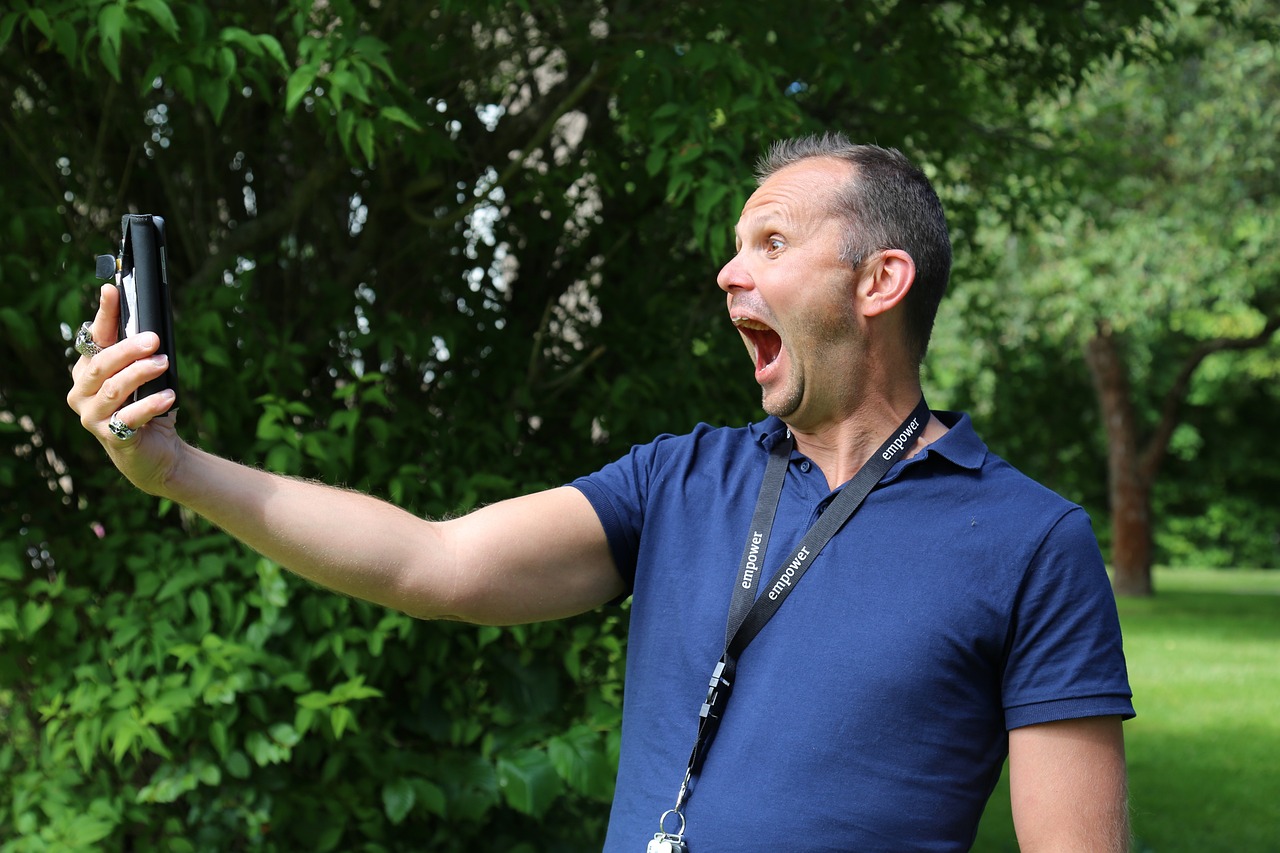
Social Media Pressure
In today's digital landscape, the pressure to present a flawless image on social media is palpable. Every time you scroll through your feed, you're bombarded with perfectly curated selfies that seem to shout, "Look at me! I'm living my best life!" This constant exposure can create an overwhelming sense of competition, leading many individuals to feel the need to constantly one-up each other. But at what cost? The pressure to post the perfect selfie can lead to anxiety, self-doubt, and even depression.
Many people find themselves caught in a cycle of comparison, where they measure their self-worth based on likes, comments, and shares. This phenomenon can distort reality, making it easy to forget that many of those perfect selfies are often the result of careful editing and strategic lighting. It's crucial to remember that social media often showcases a highlight reel of life, not the messy, unfiltered moments that make us human.
Moreover, the desire for validation through social media can lead to a dangerous mindset. Individuals may feel compelled to take selfies in risky situations just to gain a few more likes. This can create a toxic environment where self-esteem is tied to social media performance, rather than personal achievements or genuine connections. It's essential to recognize that our value is not determined by the number of followers we have or the likes we receive.
To combat this social media pressure, consider these strategies:
- Limit Your Time on Social Media: Reducing the time spent scrolling can help decrease feelings of inadequacy.
- Curate Your Feed: Follow accounts that promote positivity and authenticity, rather than those that contribute to feelings of comparison.
- Focus on Real Connections: Engage with friends and family in meaningful ways, rather than through superficial likes and comments.
By adopting a healthier perspective on social media, you can reclaim your self-worth and appreciate your unique qualities. Remember, it's perfectly okay to share selfies that are less than perfect. Authenticity resonates more deeply than a curated image ever could.
Q: How can I deal with feelings of inadequacy from social media?
A: It's important to take breaks from social media, engage in offline activities, and focus on self-care. Surround yourself with supportive people who uplift you.
Q: Is it okay to post selfies that aren't perfect?
A: Absolutely! Authenticity is more relatable than perfection. Share your true self, and you'll likely find that others appreciate your honesty.
Q: How do I know if I'm taking selfies for the right reasons?
A: Reflect on your motivations. If you're taking selfies to express yourself and capture memories, that's great! If you're doing it solely for validation, it might be time to reassess your approach.
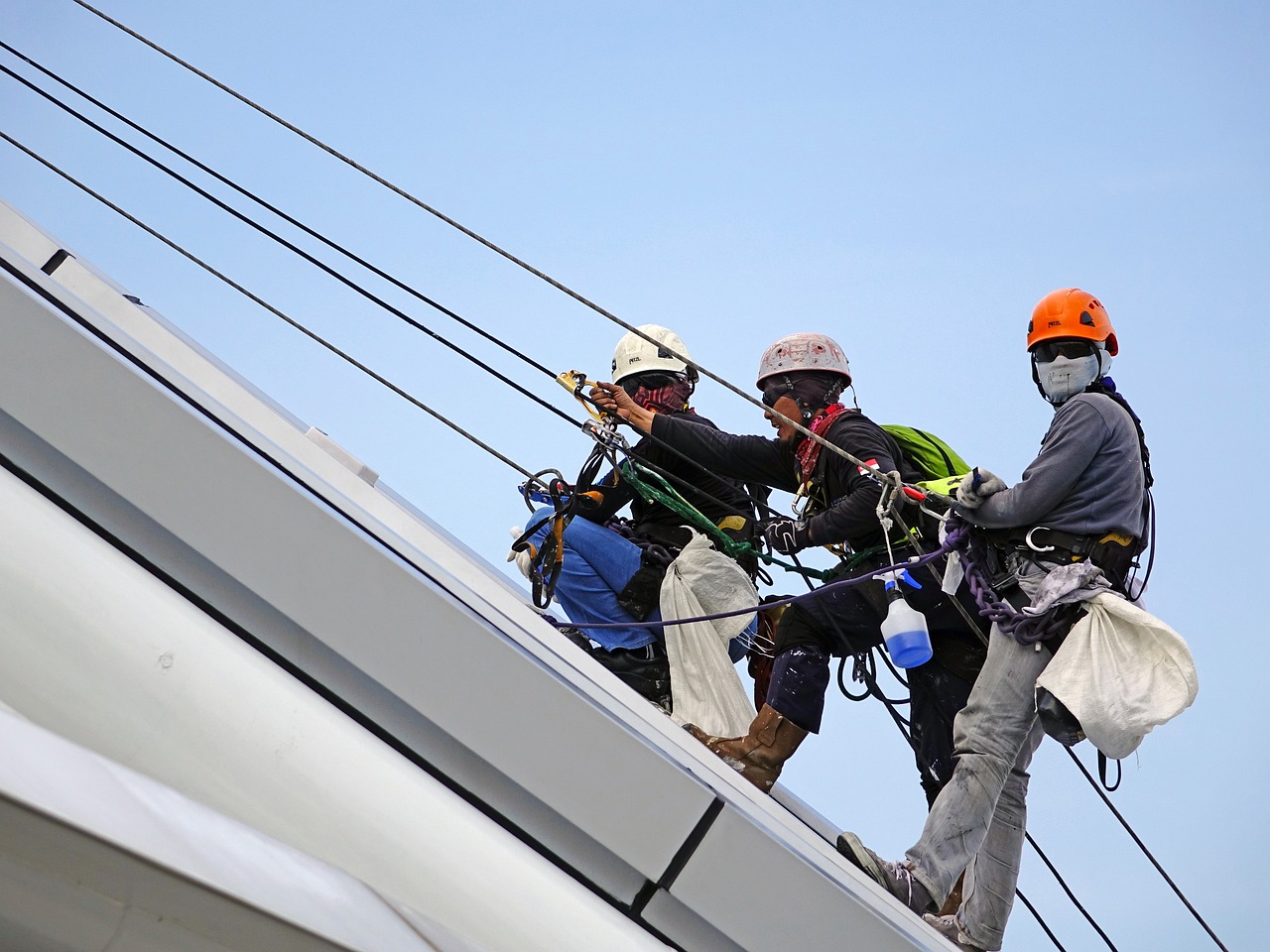
Responsible Selfie Practices
In a world where capturing the perfect selfie has become a rite of passage, it’s essential to embrace . This not only enhances your safety but also enriches your overall experience. Imagine standing on a beautiful cliff, the wind tousling your hair, and the sunset painting the sky in hues of orange and pink. You want to capture that moment, but at what cost? By being mindful and taking precautions, you can preserve those memories without compromising your safety.
First and foremost, choosing safe locations is crucial. Not every picturesque spot is suitable for a selfie. When scouting for a perfect backdrop, consider the following:
- Is the area stable and secure?
- Are there any potential hazards nearby, like steep drops or busy roads?
- Is it a crowded space where you might inadvertently cause a distraction?
By assessing these factors, you can ensure that your selfie-taking doesn’t turn into a risky endeavor. For instance, while it may be tempting to snap a photo on a busy street, it’s wiser to step aside to avoid accidents.
Moreover, practicing mindfulness and awareness while taking selfies is paramount. This means being fully present in the moment and conscious of your surroundings. Have you ever been so engrossed in getting the right angle that you lost track of what was happening around you? It’s easy to do, but it can lead to dangerous situations. Here are a few tips to enhance your mindfulness:
- Take a moment to breathe and observe your environment before snapping the photo.
- Engage with your surroundings; notice the people, sounds, and even the weather.
- Set a timer on your camera to limit the time you spend focused on the shot.
By implementing these practices, you’ll not only increase your safety but also enrich your experience. Remember, the goal is to enjoy the moment, not just document it.
Lastly, it's essential to understand the impact of social media on our selfie habits. The pressure to post perfect selfies can lead to unhealthy comparisons and a distorted sense of self-worth. To combat this, focus on authenticity. Share moments that truly represent you, rather than striving for unrealistic standards. This approach not only promotes a healthier mindset but also encourages others to do the same.
In conclusion, responsible selfie practices are about finding the balance between capturing memories and ensuring your safety. By choosing safe locations, practicing mindfulness, and embracing authenticity, you can navigate the selfie culture with confidence. So next time you’re ready to snap that picture-perfect moment, take a step back, assess your surroundings, and enjoy the experience!
Q1: What should I do if I find myself in a dangerous situation while taking a selfie?
A1: If you find yourself in a precarious position, prioritize your safety. Move to a stable area, and if you feel uncomfortable, it’s best to put the camera down and enjoy the moment without the pressure of capturing it.
Q2: How can I improve my self-esteem related to selfies?
A2: Focus on taking selfies that reflect your true self and celebrate your uniqueness. Limit your exposure to idealized images on social media, and remember that everyone has their own journey.
Q3: Are there any apps that promote safe selfie-taking?
A3: Yes, there are several apps designed to help you assess locations for safety and provide tips for responsible photography. Look for apps that offer community feedback on popular selfie spots.
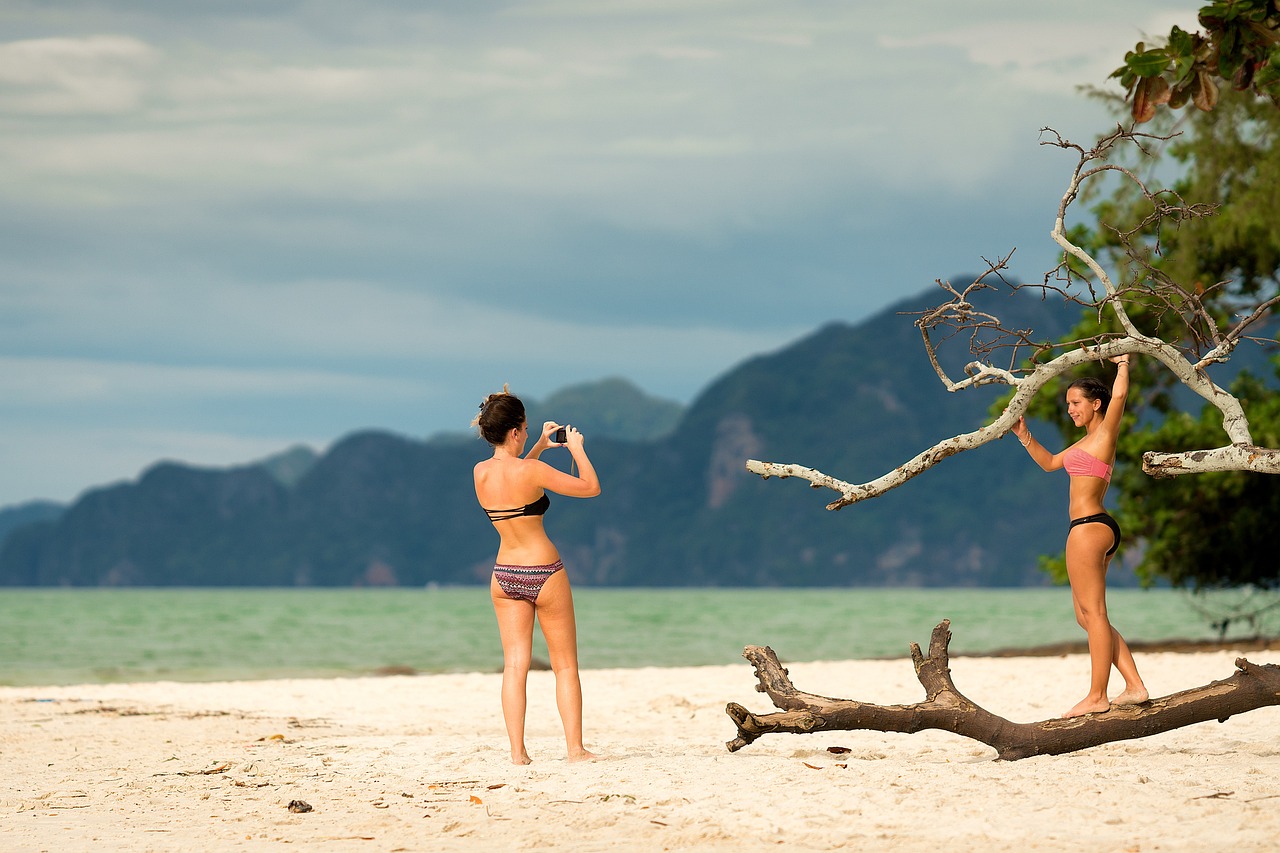
Choosing Safe Locations
When it comes to capturing that perfect selfie, the location you choose plays a critical role in ensuring both your safety and the quality of your photo. Imagine standing on the edge of a cliff, the wind blowing through your hair, and the breathtaking view behind you—it's a picture-perfect moment, right? But wait! Are you really aware of the risks involved? Choosing safe locations is not just about aesthetics; it’s about making responsible decisions that prioritize your well-being.
To start, always consider the environment where you plan to snap that selfie. Urban areas can present different challenges compared to natural settings. For instance, busy streets or crowded places can be hazardous due to the potential for accidents caused by distracted pedestrians or vehicles. On the other hand, natural locations, like beaches or mountains, can have their own set of dangers, such as unstable ground or wildlife. Here's a quick checklist to help you evaluate a potential selfie spot:
- Assess the Terrain: Is the ground stable? Are there any loose rocks or slippery surfaces?
- Check for Hazards: Are there any nearby cliffs, water bodies, or wildlife that could pose a threat?
- Consider Accessibility: Is the location easily accessible, or will you need to navigate through dangerous paths?
Moreover, it's essential to be mindful of local regulations and guidelines. Some places may have restrictions on where you can take photos, especially in national parks or historical sites. Ignoring these rules not only puts you at risk but can also lead to legal consequences. Always do a little research before heading out, and respect the environment and its regulations.
Another factor to consider is the time of day. Natural lighting can dramatically affect the quality of your selfie, but it can also impact safety. For example, taking selfies in poorly lit areas increases the risk of accidents. Aim for well-lit locations during daylight hours to ensure both safety and a great shot.
Lastly, don’t hesitate to ask for help. If you’re unsure about a location, seek advice from locals or check online reviews. Sometimes, the best recommendations come from those who know the area well. Remember, a great selfie is not worth compromising your safety. By choosing safe locations, you can enjoy the thrill of capturing memories without the worry of potential dangers lurking around.
Q1: What should I do if I find myself in a risky location while taking a selfie?
A1: If you realize you're in a risky location, prioritize your safety by moving to a safer spot immediately. It’s better to miss a photo opportunity than to risk injury.
Q2: Are there specific places I should avoid when taking selfies?
A2: Yes, avoid taking selfies near edges of cliffs, busy roads, or unstable surfaces. Always be aware of your surroundings and choose locations that minimize risks.
Q3: How can I ensure I’m not distracting others while taking selfies?
A3: Be considerate of your surroundings. If you’re in a crowded area, try to step aside or choose a less busy time to take your selfies to avoid causing distractions.
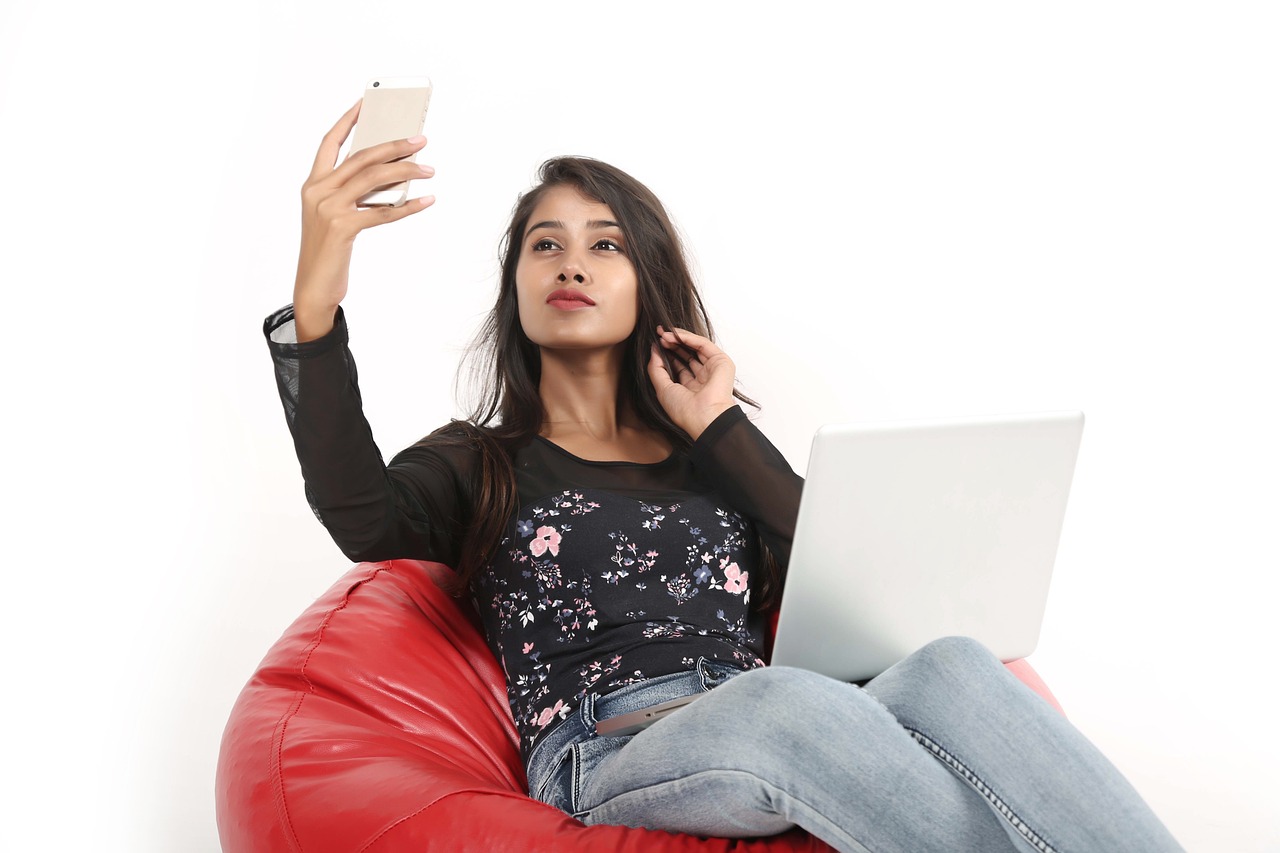
Mindfulness and Awareness
When it comes to taking selfies, the importance of mindfulness and awareness cannot be overstated. In a world where we often rush through life, it's easy to get caught up in the moment and forget about our surroundings. Think about it: how many times have you seen someone so focused on getting the perfect shot that they completely miss what's happening around them? Whether it's a stunning sunset or a bustling city street, being present can enhance not only your photography but also your safety.
Practicing mindfulness while taking selfies means being fully engaged in the moment. This involves more than just looking through the camera lens; it's about understanding your environment and recognizing any potential dangers. For instance, if you're at a crowded event or near a busy road, being aware of your surroundings can help you avoid accidents. Here are some key points to consider:
- Stay Alert: Always keep an eye on your surroundings. Look out for people, vehicles, and any potential hazards that could distract you or pose a threat.
- Limit Distractions: If you’re in a place with a lot of activity, consider putting your phone down for a moment to soak in the experience before snapping a photo.
- Take Breaks: When you're out taking selfies, it’s easy to get carried away. Take breaks to observe your environment and appreciate the moment without a camera.
Another aspect of mindfulness is self-reflection. Before you take that selfie, ask yourself why you’re doing it. Is it to capture a memory, share a moment with friends, or seek validation on social media? Understanding your motivations can help you take more meaningful photos and reduce the pressure to conform to unrealistic standards. Remember, a selfie should be a reflection of who you are, not who you think you should be.
Moreover, being present while taking selfies can also help you connect with the people around you. Instead of isolating yourself behind your phone, engage with your friends or family. This can lead to spontaneous moments that are often more memorable than a perfectly posed selfie. After all, isn’t that what life is about? Creating lasting memories with the people you love?
Ultimately, incorporating mindfulness and awareness into your selfie-taking routine not only enhances your safety but also enriches your overall experience. So next time you’re about to snap a selfie, take a moment to breathe, look around, and appreciate the beauty of the moment. You might just find that the best memories are made when you’re not focused solely on the perfect shot.
Q: How can I ensure my safety while taking selfies?
A: Always be aware of your surroundings, choose safe locations, and avoid distractions. It's essential to stay alert to potential hazards, especially in crowded or precarious areas.
Q: What should I do if I feel pressured to post selfies on social media?
A: Remember that social media is just a highlight reel. Focus on capturing moments that are meaningful to you rather than seeking validation from others. Authenticity is more important than perfection.
Q: How can mindfulness improve my selfie-taking experience?
A: Practicing mindfulness helps you stay present and engaged in the moment, allowing you to appreciate your surroundings and create more meaningful connections with those around you.
Frequently Asked Questions
- What are the main risks associated with taking selfies?
Taking selfies can pose various risks including physical accidents, psychological impacts, and social media pressures. These risks can range from falling while trying to capture a perfect shot to feeling inadequate due to unrealistic comparisons on social media.
- How can I stay safe while taking selfies in precarious locations?
To stay safe, always be aware of your surroundings and choose stable ground for your selfies. Avoid taking selfies at high altitudes or near dangerous edges unless you are securely positioned. It’s also wise to have someone with you to help ensure safety.
- What should I do if I feel pressured to post perfect selfies?
Remember that social media often showcases a distorted version of reality. Focus on authenticity rather than perfection. It’s important to take breaks from social media if you feel overwhelmed and remind yourself that your self-worth isn’t defined by likes or comments.
- How can selfies impact my self-esteem?
Frequent selfie-taking can lead to unhealthy comparisons with others, affecting your self-esteem. It's important to recognize that everyone has flaws and that social media often highlights only the best moments, not the full picture.
- Are there specific locations I should avoid for selfies?
Yes, avoid locations that pose physical dangers such as cliffs, busy roads, or unstable surfaces. Always prioritize safety over aesthetics when choosing a backdrop for your selfies.
- What are some tips for practicing mindfulness while taking selfies?
To practice mindfulness, take a moment to breathe and assess your environment before snapping a photo. Stay present and focus on the experience rather than just the outcome. This can help you enjoy the moment and stay safe.



